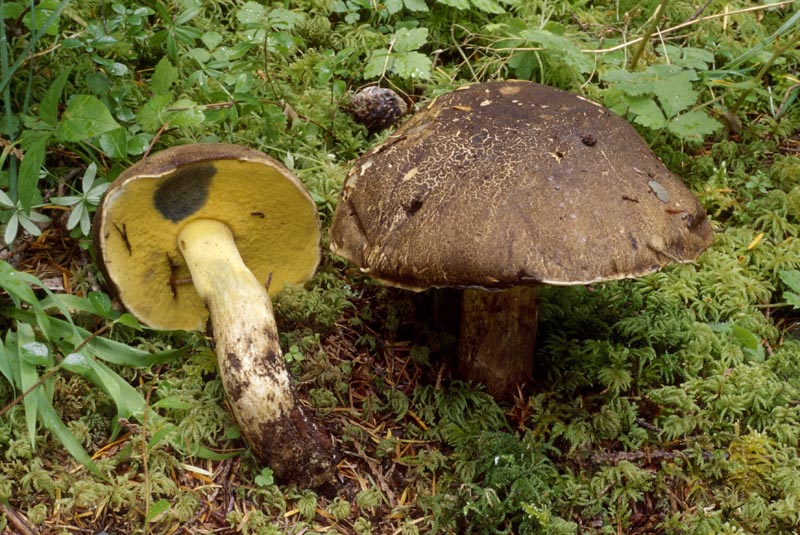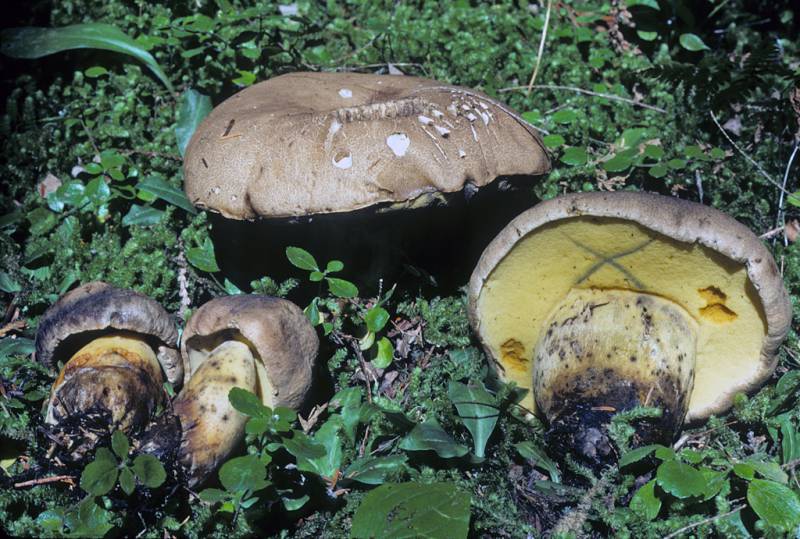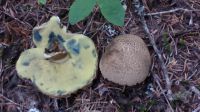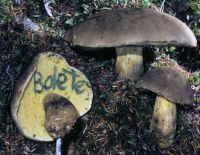Habitat: Low- to mid-elevation conifer forests
Conservation Status: Not of concern
The cap is usually large and fleshy, and the surface is unpolished to somewhat velvety and dark olive gray to gray-brown. The tubes are yellow and stain dark blue when cut or injured. The stipe is pale yellow or olivaceous to blackish in age, without red, finely reticulate at the apex, thick, and sometimes enlarged at the base. The flesh is white to yellowish, stains blue quickly after cutting, and is extremely bitter, which renders the mushroom inedible. B. calopus is a very similar bitter-fleshed species that differs by its more noticeably reticulate stipe that is red in part. B. frustosus, a close relative of B. calopus, differs from B. coniferarum by its conspicuously cracked cap surface at maturity and pink to reddish color on the lower stipe. B. rainisii (previously referred to as B. pulverulentus) is a medium-sized species with an olive-brown to yellow-brown, velvety cap, yellow tubes, and yellow stipe with some reddish tones near the base. It stains blue to olive green or greenish black instantly when cut or handled, and has a mild taste. It occurs in coastal conifer forests.
Sources: Trudell, Steve and Joe Ammirati. Mushrooms of the Pacific Northwest. Portland, Timber Press, Inc. 2009.
PNW Herbaria: Specimen records of Boletus coniferarum in the Consortium of Pacific Northwest Herbaria database
CalPhotos: Boletus coniferarum photos







